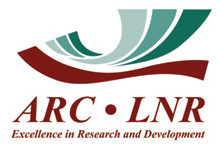
The production of staple crops locally has become more important, as the global recession along with higher food prices have increased the number of people silently suffering from hunger and poverty.
There is a pressing need to increase food availability with high nutrients while ensuring better stability for producers. Major challenges affecting producers include pest infestation, which causes some of the largest decreases in crop yield. Additionally, the change in weather patterns such as spring rain that occur later than previously or severe storms or prolonged wet periods that occur during harvest time, promote reduced yield and quality. In order to alleviate poverty, it is as important to improve nutritional quality as it is to increase staple grain yields.
Tremendous efforts have been made by breeders to improve grain yield through selection and crossbreeding of plants with the most beneficial characteristics. However, conventional breeding reduces protein content when breeding for increased grain yield and the methods are very time-consuming for developing new varieties. Moreover, agronomic traits such as yield, yield-related traits, disease resistance, and abiotic stress are also considered quantitative or complex traits, since they are controlled by many genes and are affected by the environment. To overcome this obstacle, DNA technologies can be used to speed up the breeding process to improve yield as well as quality of grain crops. DNA molecular markers can be used to select plants with genes of interest and identify homozygous or heterozygous traits efficiently at seedling stage, therefore preventing the labour of nurturing plants without the gene of interest.
The interest in using DNA technologies in agriculture is growing in South Africa (Table 1), but there is still a limited understanding of genomics and genomic technologies. To expand the breeder’s toolkit, genetic modification and genome editing are among the most effective and sustainable ways to manage plant pathogens. A disease-resistant gene from a wild relative can, for example, be transferred directly into the elite cultivar, thus speeding up breeding by reducing backcrossing cycles. Crops with long generation times, complex or duplicated genomes, or where desired characteristics are genetically linked with undesirable characteristics, can benefit greatly from genome editing. This technique has been practised successfully in South African maize production.

 Genetic crop improvement has been and will continue to be an essential determinant for breeders, producers and researchers to meet not only the growing demand for food but also food sovereignty (the right of people to healthy and culturally appropriate food produced through ecologically sound and sustainable methods, and their right to define and control their own food and agriculture systems). Plant breeding has been employed since the beginning of agriculture, but now it has evolved with technological innovations and strategies to account for environmental variability, leading to more sophisticated selection and improved agricultural productivity. Molecular science presents the most efficient, cost-effective tools and environmentally friendly strategies for improvements in food security.
Genetic crop improvement has been and will continue to be an essential determinant for breeders, producers and researchers to meet not only the growing demand for food but also food sovereignty (the right of people to healthy and culturally appropriate food produced through ecologically sound and sustainable methods, and their right to define and control their own food and agriculture systems). Plant breeding has been employed since the beginning of agriculture, but now it has evolved with technological innovations and strategies to account for environmental variability, leading to more sophisticated selection and improved agricultural productivity. Molecular science presents the most efficient, cost-effective tools and environmentally friendly strategies for improvements in food security.



























